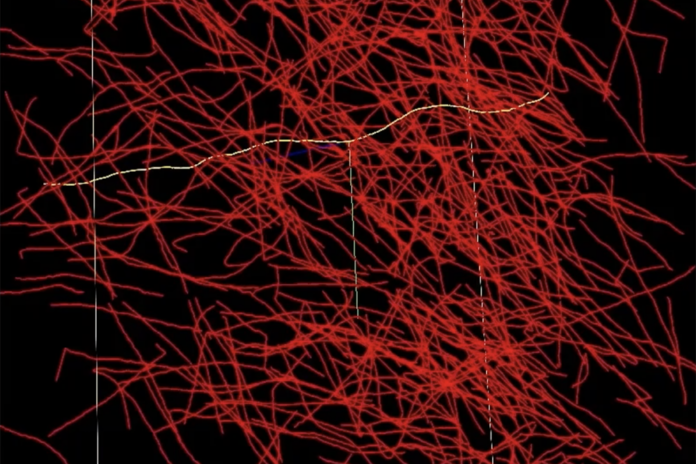In Short:
As AI technology improves, it becomes harder to tell humans from AI online. Researchers from MIT and other organizations propose “personhood credentials” to verify human users while protecting their privacy. These credentials would allow individuals to prove they’re human without revealing personal details. While they can enhance trust online, there’s concern about privacy and power concentration. It’s vital to create fair policies for their use.
As advancements in artificial intelligence continue to evolve, distinguishing between AI-powered entities and real humans online may become increasingly challenging. A recent white paper co-authored by researchers from MIT, OpenAI, Microsoft, and other notable tech organizations proposes the implementation of personhood credentials. This verification technique aims to enable individuals to authenticate their humanity online while safeguarding their privacy.
In a discussion with MIT News, two co-authors of the paper, Nouran Soliman, a graduate student specializing in electrical engineering and computer science, and Tobin South, a graduate student at the Media Lab, elaborated on the necessity for these credentials, the associated risks, and potential implementation strategies that ensure safety and equity.
Q: Why do we need personhood credentials?
Tobin South: The capabilities of AI are advancing rapidly. While public discourse often centers on the enhanced performance of chatbots, the potential of sophisticated AI extends far beyond this, enabling autonomous online interactions. Such advancements allow AI to create accounts, post content, generate fake information, and masquerade as human users, leading to significant risks. This challenge can be framed as a “digital imposter” problem, making it increasingly difficult to differentiate between advanced AI and actual humans. Personhood credentials may serve as a viable solution to this complication.
Nouran Soliman: The potential of advanced AI can also empower malicious actors to conduct large-scale attacks or disseminate misinformation. As AI-generated content proliferates, navigating the internet—especially social media—could become significantly more challenging. Personhood credentials could be utilized to filter content, moderate social media feeds, and evaluate the trustworthiness of information encountered online.
Q: What is a personhood credential, and how can it be secured?
South: Personhood credentials provide a mechanism to demonstrate one’s humanity without divulging any additional identity information. These credentials are obtained through an entity such as the government, ensuring one’s humanity while employing privacy technologies to protect sensitive identity information. To acquire a personhood credential, individuals may be required to verify their identity in person or maintain a relationship with a governmental entity, like possessing a tax ID number. This offline requirement is critical, as AI cannot perform actions that only humans can, such as visiting the DMV. Moreover, even the most sophisticated AIs cannot breach cryptographic security, allowing us to fuse these two concepts—cryptographic security and unique human capabilities—to create robust assurances of humanity.
Soliman: It is important to note that personhood credentials can be optional. Service providers could give individuals the choice to utilize these credentials. Currently, there is no effective means for those wishing to engage solely with verified individuals online to do so. As AI agents increasingly take action on behalf of individuals—such as making online purchases or negotiating deals—it becomes crucial for users to interact with entities possessing personhood credentials to ensure trustworthiness.
South: Personhood credentials would be built upon an existing infrastructure and security technologies, such as the conventional use of identifiers like email accounts for logging into services, and would complement these established practices.
Q: What risks accompany personhood credentials, and how can these risks be mitigated?
Soliman: One significant risk lies in the potential implementation of personhood credentials. Concentration of power is a concern; for instance, if a single entity is solely responsible for issuing these credentials, it may breed distrust among segments of the population. To foster confidence in this system, trust in the issuers must be prioritized, and individual identities should remain segregated from their personhood credentials to protect privacy.
South: Requiring physical verification to obtain personhood credentials could pose challenges in regions where access to such locations is difficult or dangerous. This could hinder some individuals’ abilities to express themselves freely online, thus limiting free expression. Hence, offering a variety of issuers for personhood credentials and establishing an open protocol is essential to ensure the maintenance of freedom of expression.
Soliman: This white paper advocates for investment in personhood credentials by governments, policymakers, researchers, and industry leaders. We encourage further exploration of various implementation strategies and their broader community impacts. It is imperative to establish appropriate policies and guideline frameworks for the use of personhood credentials.
South: The pace of AI development is outstripping governmental adaptability. It is crucial for both governments and major corporations to consider how their digital systems can evolve to validate human identity in a manner that preserves privacy and security, preparing us for a future where AI capabilities are profoundly advanced.





